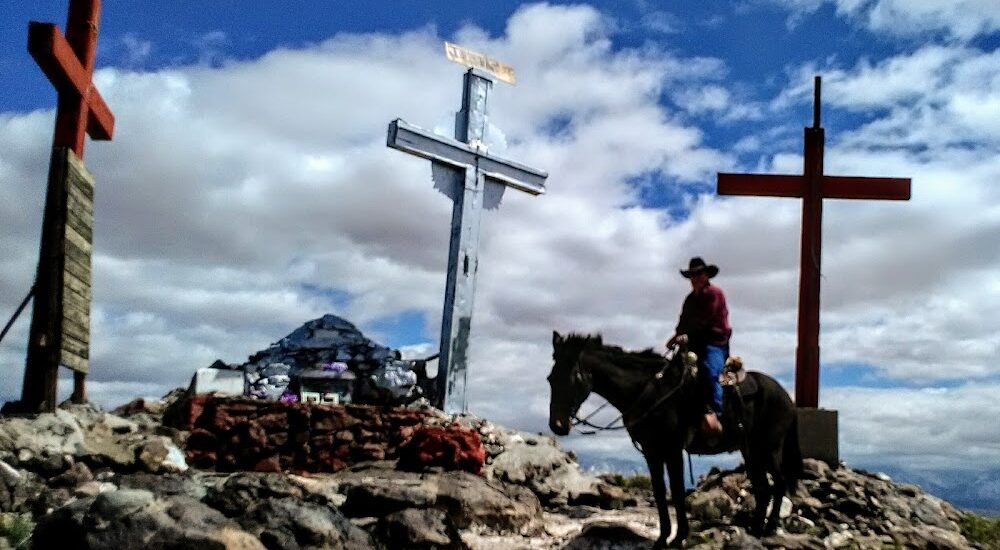El Cerro de Tomé, also known as Tomé Hill, stands as an enduring symbol of spiritual and historical significance in New Mexico. Rising 400 feet above the Rio Grande floodplain, this basalt hill is located approximately 10 miles south of Isleta Pueblo and serves as a prominent feature in the landscape. Its importance dates back thousands of years, marked by the presence of petroglyphs that tell stories from 3000 BC to the 17th century. These ancient rock carvings provide a glimpse into the worldviews and cosmologies of Native cultures who considered the hill a sacred site.
The hill gained further significance during the colonial period when it became a landmark on El Camino Real de Tierra Adentro, the Royal Road that connected Mexico City to San Juan Pueblo in what is now northern New Mexico. This route was pivotal for Spanish colonization, serving as a conduit for culture, commerce, and religion. The 17th-century arrival of Spanish colonists is evident in the petroglyphs depicting crosses and other Christian symbols, representing a fusion of indigenous and European spiritual practices.
One notable figure associated with Tomé Hill is Tomé Domínguez de Mendoza, a Spanish soldier and interim governor of New Mexico in 1664. He was granted land near the hill, and his legacy is reflected in the name of both the hill and the nearby village of Tomé. The village was officially established in 1739 when a group of settlers received a land grant, and it quickly became an important stop along El Camino Real.
Over the centuries, Tomé Hill has been a site of pilgrimage and spiritual reflection. Since 1948, it has been the focus of an annual Good Friday pilgrimage, where visitors climb to the summit to view the trio of crosses and the masonry shrine adorned with rosaries and religious quotes. These traditions highlight the hill’s continuing role as a place of multicultural spirituality.
Today, El Cerro de Tomé is preserved by the local Town of Tomé Land Grant, ensuring its historical and cultural features remain intact. Visitors can hike to the summit for panoramic views of the surrounding landscape, including the Sandia and Manzano Mountain ranges, and appreciate the rich history etched into its slopes by generations past.






